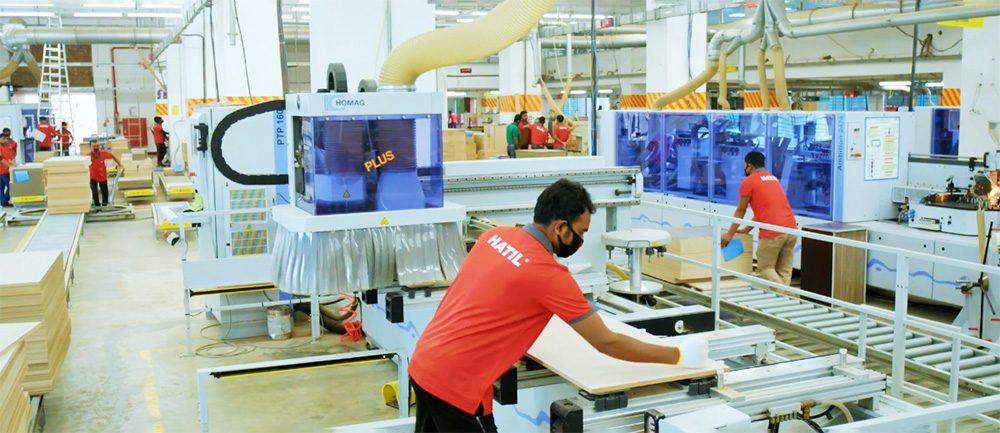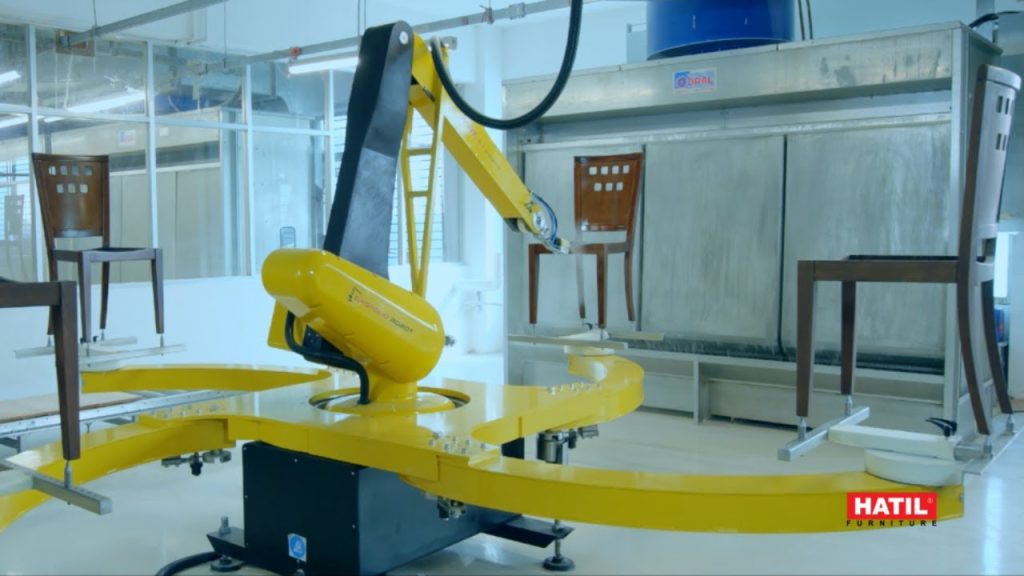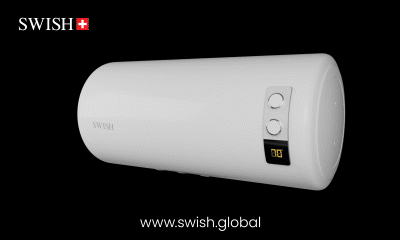How Does Hatil Furniture Guarantee Product Quality?
Hatil, a wood-based furniture manufacturer, embarked on its journey in 1966 under the guidance of the late Chairman Alhaj Habibur Rahman. Originally known as H.A. Timber Limited, the company’s primary focus was timber purchase, processing, and sales. In 1989, the transformation to Hatil marked a significant milestone, propelling the company’s growth over the years. In a time when Bangladesh relied on furniture imports, Hatil took on the challenge of local production to cater to the domestic market. Upholding the motto ‘Slim is smart,’ Hatil’s commitment to exceptional quality became its hallmark.
With an unwavering dedication to craftsmanship, Hatil Furniture continuously explores innovative avenues to create exquisite furniture pieces. By blending modernity with affordability, the company strives to provide customers with comfortable and visually appealing options. This mission has led Hatil to expand its reach beyond national borders, now exporting its products internationally.

Originating as door manufacturers twenty years ago, Hatil’s journey now encompasses two state-of-the-art factories and a network of 75 outlets. Beyond traditional furniture, Hatil houses an interior design unit, bolstering its offerings. The company’s digital presence includes an e-commerce site, mobile app, and Bangladesh’s first virtual showroom.
Beyond its borders, Hatil’s locally crafted furniture graces over 18 countries, counting India, Bhutan, and the United States among them. Today, HATIL currently has more than 70 showrooms in Bangladesh and 27 showrooms abroad in India, 2 showrooms in Nepal, and 1 franchise in Bhutan.
Related Content: HATIL’s Commitment to Recycling and Renewable Energy for a Sustainable Future
Within Bangladesh, Hatil operates two production units, crafting furniture materials, veneer doors, plywood, and more. Despite pandemic-induced challenges in the last two years, Hatil managed a remarkable turnover of approximately BDT 400 crore in the previous fiscal year, with exports contributing 2.5 million. A major driving force behind this triumph is Hatil’s commitment to unparalleled quality and unique design.
Amidst a dual commitment to local and global markets, Hatil’s dedication to product quality stands strong. But how does Hatil maintain these high standards across its diverse customer base? Let’s delve into the mechanisms that underpin Hatil’s assurance of exceptional product quality.”
How Do They Maintain the Quality
Hatil has put a priority on maintaining the quality of every product it produces ever since it began its journey. Hatil’s production facility is meticulously designed to adhere to time-based manufacturing principles, aligning with Italian standards. Time-based manufacturing involves setting standardized timeframes for all manufacturing-related activities while centralizing control over these processes. Consequently, Hatil has achieved ISO (ISO 9001:2015) certification for its Quality Management System. But, how exactly does Hatil ensure and maintain the quality of its furniture production?

Raw Materials and Eco-Friendly Processes
Hatil’s commitment to quality extends to its meticulous selection of raw materials. The company employs a combination of beechwood, particle boards, plywood, and metal in its furniture manufacturing. Among these, Hatil exclusively sources beechwood from FSC-certified German suppliers. The Forest Stewardship Council (FSC) certification ensures that wood originates from environmentally responsible practices.
Hatil proudly holds its own FSC certification as an institution in Bangladesh. In addition to beechwood, the company incorporates eco-friendly materials such as Medium Density Fiberboard (MDF) and Melamine Face Chipboard (MFC).
In pursuit of sustainability, Hatil employs an environmentally conscious wood curing process, accredited by the Department of Environment in Bangladesh. Typically, wood curing takes around 8 to 10 days; however, Hatil’s proprietary chemical mixture achieves the same results in just 24 hours. Once cured, the wood, devoid of moisture, undergoes seasoning. While natural sun-drying can span months to a year, Hatil’s seasoning plant expedites the process, completing it in 14 to 21 days, contingent on wood log thickness.
Remarkably, Hatil’s seasoning plant harnesses wooden dust as a fuel source, minimizing reliance on harmful fuels and repurposing factory waste. Following curing and seasoning, the timber undergoes rigorous inspection before advancing to the production phase.
Cutting, Production, and Quality Control
The raw materials converge at Hatil’s “Solid and Panel Mill,” a pivotal production department. Each solid board is meticulously sized for furniture crafting. To execute this, Hatil utilizes two advanced German panel saws, employing cutting-edge technology for precise cuts.
These panel saws are pre-set according to diverse sizes, enabling simultaneous cutting up to 80 mm. While Hatil maintains Quality Control (QC) checks at each stage of furniture crafting, meticulous precision during cutting remains paramount. Once cut, Hatil employs state-of-the-art automated CNC machines to transform these pieces into the envisioned product shapes.
To ensure dimensional accuracy and minimize design errors, Hatil meticulously cuts and checks all products, reducing the likelihood of discrepancies. Automated machines, guided by pre-input designs, execute tasks seamlessly. The subsequent production stage occurs on distinct lines tailored to the product type. Notably, for MFC boards, Hatil conducts aging processes, integrating tasks such as boring, routing, and molding throughout the sequence.
Seasoned woods, arriving from the sawmill in various dimensions, are directed to the solid mill. Here, they undergo shaping, sanding, tenon mortise operations, engraving, and quality assessments. Once the quality check is passed, pre-assembly begins. Hatil classifies furniture into 2D and 3D categories. For 2D furniture, painting occurs before assembly at the customer’s location. Conversely, 3D furniture is assembled entirely in the Hatil factory.
Related Content: HATIL’s journey from Brand to Superbrand
Hatil takes pride in manufacturing its foam, using three variants: semi foam, polyfoam, and super soft foam. These foams are combined for optimal comfort. In mattresses, orthopedic felt mattresses are produced using rebonded foam and felt for superior user comfort.
The upholstery department is responsible for chairs and sofas, involving fabric selection. Imported fabrics are cut using cutting-edge USA automatic machines for precise dimensions. State-of-the-art German sewing machines guarantee strong stitching, enhancing fabric durability. Skilled Hatil staff progressively assemble foam and fabric, ensuring six-tiered QC checks.
Apart from wood, plywood, and particle boards, Hatil also manufactures metal furniture, including chairs, tables, and cabinets. Two types of metal, general sheet metal and pipe, are used, each requiring dedicated production lines. Hatil employs modern Japanese and Italian machines for fine-punching and cutting operations, coupled with four-stage QC checks.
To enhance metal surfaces, Hatil subjects them to sulfate and nickel chemical treatments. Thorough inspections occur during production, referred to as “In Process Inspection.” If any raw materials encounter issues, multiple inspections rectify them, ensuring product integrity.
Conclusion
The final phase of Hatil’s furniture production involves coloring and varnishing. This stage is tailored to the type of furniture, categorized as 2D and 3D, each with its distinct coloring zone. For 2D products, Hatil employs UV (ultraviolet) lacquer. Unlike traditional methods that entail a 6 to 7-hour curing period, UV lacquer drastically reduces drying time to a mere 8 to 10 minutes, hastening the process remarkably.
Robotic technology takes center stage for coloring 3D products. Conventionally, coloring 3D items incurs color wastage, but robotic application eliminates waste by virtue of precise time and quantity input. Throughout the coloring process, sanding and QC checks persist, allowing swift resolution of any detected defects.
Hatil’s employment of advanced robots for coloring 3D products minimizes paint wastage and ensures impeccable precision. Upon finalization of production, a pre-shipment inspection is conducted to ensure adherence to quality parameters. Should any errors be identified, Hatil promptly rectifies them, underscoring the commitment to delivering flawless products.
In the case of metal furniture, Hatil adopts a powder coating approach for coloring, incorporating heat treatment for application. The culmination of these meticulous processes is individual inspections across various sections, further corroborating product excellence.
By executing a four-tiered quality inspection regimen, Hatil has substantially reduced defects in its products and consequently minimized customer grievances. Different departments utilize QC Tools suited to their operational convenience, including flow charts and check sheets. Moreover, Hatil employs the “Cause and Effect” diagram, also known as the “Ishikawa” diagram, to tackle QC-related issues. This methodology facilitates root cause analysis, enabling Hatil to refine its system through Kaizen principles, thereby preventing recurrence of similar errors.
















